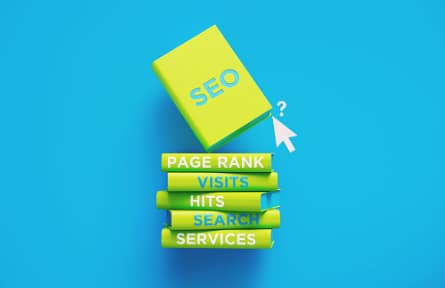Are you ready to take your blog marketing strategy to new heights? Whether you’re a seasoned blogger or just starting out, it’s crucial to understand the ins and outs of this powerful promotional tool.
In today’s fast-paced digital world, blogging has become an essential aspect of successful online marketing. But before you jump headfirst into the exciting world of blog marketing, it’s crucial to consider some factors that will help ensure your efforts are not only effective but also yield long-term results. Join us as we explore the ultimate guide to blogging, and get ready to ignite your blog to propel your brand forward.
Define Your Target Audience

Before diving into blog marketing, it is crucial to define your target audience. Understanding who your ideal readers are will help you tailor your content to resonate with their interests, preferences, and pain points. Conduct thorough market research to identify your audience’s demographics, interests, and online behaviors. Use this data to create detailed buyer personas that represent different segments of your target audience. Crafting content that speaks directly to these personas will attract more relevant traffic to your blog and foster a loyal readership.
Develop a Content Strategy
A well-defined content strategy is the backbone of successful blog marketing. Plan your content in advance, ensuring it aligns with your overall goals and addresses the needs of your target audience. Diversify your content to include informative articles, how-to guides, case studies, interviews, and engaging visuals. Create an editorial calendar to maintain consistency in posting and to cover a wide range of topics relevant to your audience.
Focus on Search Engine Optimization (SEO)
Search Engine Optimization (SEO) is essential for improving your blog’s visibility in search engine results. Implementing SEO best practices will help you attract organic traffic and reach a wider audience. Conduct keyword research to identify relevant and high-traffic keywords related to your content. Integrate these keywords naturally into your blog posts, titles, and meta descriptions. Additionally, optimize your blog’s loading speed, improve its mobile responsiveness, and build quality backlinks to enhance your blog’s SEO performance.
Engage With Your Audience
Engagement is a key factor in successful blog marketing. Interact with your readers by responding to comments, messages, and social media interactions promptly and thoughtfully. Encourage feedback and foster a sense of community by posing questions and asking for opinions in your blog posts. Engaged readers are more likely to share your content, leading to increased visibility and potential new readership.
Promote Your Content Strategically
Producing high-quality content is essential, but it’s equally important to promote it effectively. Develop a comprehensive content promotion strategy that utilizes various channels to reach your target audience. Share your blog posts across social media platforms, email newsletters, and relevant online communities. Collaborate with other bloggers, influencers, or industry publications to extend your reach and gain exposure to new audiences.
Monitor and Analyze Performance
 Regularly monitoring and analyzing your blog’s performance is essential for understanding what works and what needs improvement. Utilize analytics tools to track key metrics such as website traffic, bounce rates, time on page, and conversion rates. Identify patterns and trends in your data to gain insights into your audience’s behavior and preferences. Use this information to refine your content strategy, optimize your blog’s performance, and make data-driven decisions to enhance your blog marketing efforts.
Regularly monitoring and analyzing your blog’s performance is essential for understanding what works and what needs improvement. Utilize analytics tools to track key metrics such as website traffic, bounce rates, time on page, and conversion rates. Identify patterns and trends in your data to gain insights into your audience’s behavior and preferences. Use this information to refine your content strategy, optimize your blog’s performance, and make data-driven decisions to enhance your blog marketing efforts.
Blog marketing offers a powerful platform to connect with your target audience, establish authority in your industry, and drive valuable traffic to your website. By considering these key aspects – defining your target audience, developing a content strategy, focusing on SEO, engaging with your readers, promoting your content strategically, and monitoring performance – you can create a successful blog marketing strategy.



 One type of bad link that can get you penalized is a random nofollow link. This is a link from an unrelated website that doesn’t add any value to your own. For example, if you have a blog about parenting and you get a link from a website about car parts, that’s a random nofollow link. Google sees these links as attempts to manipulate their algorithm, and they will penalize you for it. Not only that, but these links can also get you flagged as spam by other users, which can further damage your reputation.
One type of bad link that can get you penalized is a random nofollow link. This is a link from an unrelated website that doesn’t add any value to your own. For example, if you have a blog about parenting and you get a link from a website about car parts, that’s a random nofollow link. Google sees these links as attempts to manipulate their algorithm, and they will penalize you for it. Not only that, but these links can also get you flagged as spam by other users, which can further damage your reputation. Another type of bad link is one that comes from an irrelevant website. This is a website that is not related to your own and doesn’t have any content that would be of interest to your audience. For example, if you have a blog about parenting and you get a link from a website about pet care, that’s an irrelevant link. Google knows that these links provide no value to the user and will penalize you.
Another type of bad link is one that comes from an irrelevant website. This is a website that is not related to your own and doesn’t have any content that would be of interest to your audience. For example, if you have a blog about parenting and you get a link from a website about pet care, that’s an irrelevant link. Google knows that these links provide no value to the user and will penalize you. The final type of bad link is one that is created by an automatic link-building program. These programs are designed to create links on your behalf, but they often create low-quality links that can get you penalized by Google. In addition, these programs can also get you flagged as spam by other users, which can further damage your reputation. If you’re using any automatic link building program, we recommend that you stop immediately. Not only will it save you from a possible penalty, but it will also improve your overall SEO strategy.
The final type of bad link is one that is created by an automatic link-building program. These programs are designed to create links on your behalf, but they often create low-quality links that can get you penalized by Google. In addition, these programs can also get you flagged as spam by other users, which can further damage your reputation. If you’re using any automatic link building program, we recommend that you stop immediately. Not only will it save you from a possible penalty, but it will also improve your overall SEO strategy.
 Chatbots are computer programs designed to simulate conversation with human users. They use natural language processing (NLP) and machine learning technology to understand user inputs and generate relevant responses in real time. Chatbots can be integrated into various platforms, such as websites, messaging apps, social media channels, and mobile apps.
Chatbots are computer programs designed to simulate conversation with human users. They use natural language processing (NLP) and machine learning technology to understand user inputs and generate relevant responses in real time. Chatbots can be integrated into various platforms, such as websites, messaging apps, social media channels, and mobile apps. Chatbots have become a popular tool in digital marketing, and for good reason. One of the biggest benefits of using chatbots is that they save time and resources. With a chatbot, businesses can automate customer service tasks such as answering frequently asked questions or scheduling appointments. This allows human employees to focus on more complex issues requiring expertise.
Chatbots have become a popular tool in digital marketing, and for good reason. One of the biggest benefits of using chatbots is that they save time and resources. With a chatbot, businesses can automate customer service tasks such as answering frequently asked questions or scheduling appointments. This allows human employees to focus on more complex issues requiring expertise.

